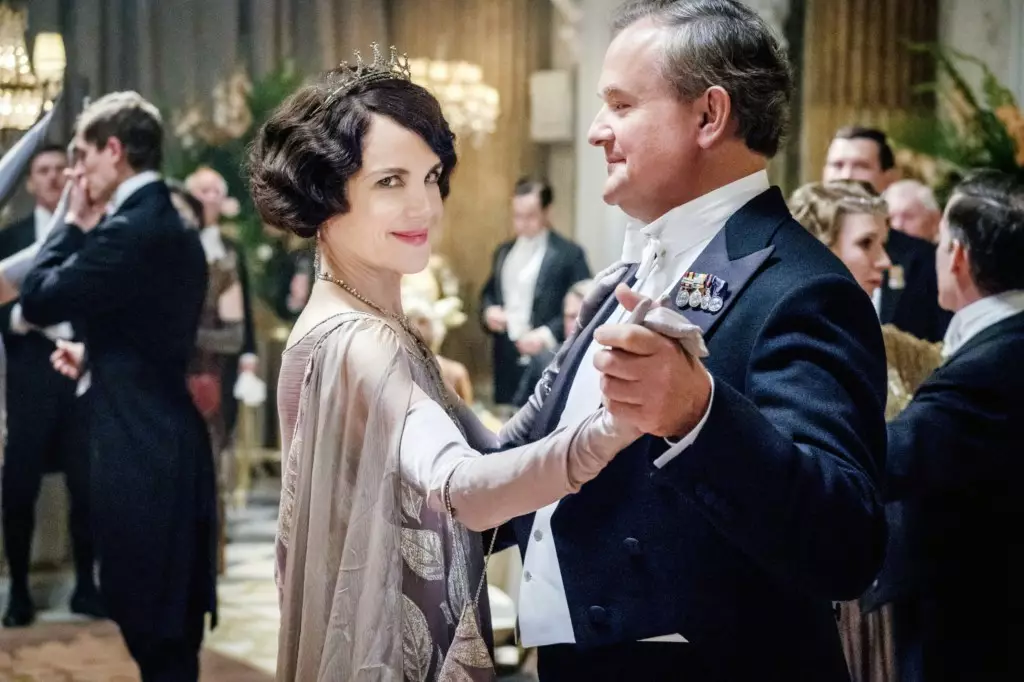At CinemaCon, our hearts were stirred by the unveiling of the first trailer for “Downton Abbey: The Grand Finale.” As fans of the beloved British series, we are on the brink of an emotional farewell to the Crawley family and their iconic estate. While it’s easy to get lost in the grandiosity of the sweeping narrative, what truly resonates is the poignant realization that all good things must come to an end. The phrase “It’s time to say goodbye” displayed in the trailer sets an entirely different tone; it hints at the end of an era, one deeply intertwined with our own memories and emotions.
This sentiment isn’t merely about the fictional narrative playing out on screen, but about the personal connections we develop with such worlds. As the Earl of Grantham, played by Hugh Bonneville, reaches out to the facade of the Grantham Estate, we too feel an urge to touch the past before it slips away. With this last installment, created by Julian Fellowes and directed with finesse by Simon Curtis, we’re not just spectators of a story; we are active participants in a collective farewell that evokes a sense of loss, gratitude, and nostalgia.
Returning Favourites and New Faces
The trailer serves not only as a nostalgic reminder of the characters we’ve grown to love but also introduces us to new ones. It is intriguing to see how the addition of actors like Joely Richardson and Alessandro Nivola will blend into the rich tapestry of established relationships within the Downton universe. As someone who has followed this saga closely, I am cautiously optimistic. The storyline already boasts a formidable cast of returning actors, with the likes of Michelle Dockery’s Lady Mary and Jim Carter’s Mr. Carson intermingling with new characters—an element that could either refresh or disrupt the dynamic.
However, it’s essential to approach this mix with tempered expectations. The introduction of new characters can invigorate a franchise, but it must be handled delicately to ensure that the emotional core remains intact. The defining emotional weight of the series—echoed poignantly in the lingering legacy of Maggie Smith’s Dowager Countess—risks becoming diluted if not executed with care.
A Tribute to Legacy
Maggie Smith’s passing has added layers of gravity to this finale, serving as a stark reminder of mortality within the context of the entertainment we cherish. The passing of the Dowager Countess signifies not only a character’s end but also a symbolic closure to the vintage aristocratic world that “Downton Abbey” encapsulates. The fragility of life underscores every moment in the trailer; as we gather to witness the finale, we also grapple with the reality of letting go.
Indeed, the portrayal of relationships, rife with the complexities of love and loss, promises to be an emotional exploration unlike any previous installments. It’s this depth that aligns me more with center-right liberalism—recognizing tradition while embracing change, and acknowledging the richness of our social fabric that characters like the Crawley family embody.
The Final Curtain Call
As we stand on the precipice of this cinematic farewell, it’s hard not to anticipate the waves of emotion that “Downton Abbey: The Grand Finale” will undoubtedly evoke. More than just a concluding narrative of a beloved series, it is a reminder of our own ephemerality, a call to appreciate the moments we hold dear while they last. Let’s not forget that while the story may end, the emotional resonance and memories we carve will linger on—the true legacy of “Downton Abbey.”

